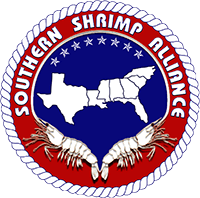This morning, the U.S. International Trade Commission voted against imposing additional duties on subsidized shrimp imports from China, Ecuador, India, Malaysia, and Vietnam. The decision marks the end of the countervailing duty investigations started at the request of the Coalition of Gulf Shrimp Industries (COGSI).
At this time, the specific basis for the Commission’s decision is not known. The reasons underlying the Commission’s negative vote will be released to the public within the next couple of weeks. However, the request for trade relief came at an unusual time and the current state of the U.S. shrimp market may help to provide context for the determination.
Since 2003, when the domestic shrimp industry requested trade relief against dumped imports from six countries, import volumes have remained at fairly consistent levels. More recently, import volumes have significantly fallen and U.S. market prices for shrimp have substantially improved over the last two years.
In its investigation, the Commission analyzed the condition of the domestic shrimp industry since 2010. The record developed by the agency showed that domestic processors had built additional production capacity, increased production, increased the number of workers employed in the sector and, even accounting for those new workers, increased productivity since 2010.
Most remarkably, the Commission’s staff found that domestic shrimp processors earned a cumulative net income of nearly $54 million in 2012 – an amount almost five times the average annual net income ($11.7 million) reported by shrimp processors to the Commission during an eleven-year period spanning from 2001 through 2011. The Commission’s prior investigations involving the shrimp industry showed that shrimp processors had reported net income in excess of $30 million only once during that eleven-year period (in 2006 – when over $100 million in assessed antidumping duties was distributed to the shrimp industry through the Continued Dumping and Subsidy Offset Act).
The Commission’s vote follows the U.S. Department of Commerce’s negative countervailable subsidy determinations with respect to the Thai and Indonesian shrimp industries. These countries are, respectively, the largest and third-largest suppliers of shrimp to the U.S. market. With the exclusion of shrimp from these countries, had the Commission voted to impose additional duties, the trade relief would have covered less than half of all shrimp imports.
The industry’s response to the countervailing duty petitions was also quite different than the overwhelming support of industry members for the antidumping duty petitions filed a decade ago. Here, the thirty-odd members of COGSI pursued trade relief without seeking to build support for the request within the industry. Instead, COGSI advocated for narrow definitions of the domestic shrimp industry that would have precluded the participation of various segments of the industry. In consequence, overall support for the petitions for trade relief was limited, with the vast majority of industry members declining to express any position regarding the case.
Nevertheless, even with this context, an emphasis on the failure to obtain additional duties misses the larger point. As a result of the petitions filed for trade relief, Commerce found that countervailable subsidies were granted to the shrimp exporting industries in China, Ecuador, India, Malaysia, and Vietnam. In other words, the U.S. government has formally found that unfair trade continues to impact the U.S. market for shrimp. Although the Commission declined to grant a remedy against such unfair trade, this decision cannot be understood or construed as tolerance for unfair trade practices.
